The West coast of Ireland offers an almost infinite amount of windsurfing spots, both with the Atlantic swell and in flat water conditions. If you add to this feature, breathtaking views, the opportunity to enjoy spectacular coastal trekking, the visit to castles and millenary abbeys, the pubs, the Guinness, and the hospitality of the Irish, it is natural to conceive a travel idea for an unforgettable 360 degrees experience.
Windsurfing, travel ideas: the West Coast of Ireland
Editor's note (May 2020): We don't know when we will be able to make this trip, given the restrictions and prohibitions related to the pandemic from Covid-19. But we want to return to dream, and to look to the future, and we want to drag you with us in this dream, which we will realize as soon as possible.
Winds and waves characteristics
Ireland lies between 51° and 55° north latitude. Hence, almost all Atlantic low pressures pass nearby, if not directly over Ireland. This guarantees abundance and quality of wind and waves. The cycle of winds in conjunction with the passage of a disturbance is typical of the northern hemisphere.
Typically, a new low pressure front will bring, first of all, warm and humid air from the subtropical regions and winds from the South, which will thicken the clouds more and more. Subsequently the winds will veer and come from the South West, accelerating, and causing rain. After the low pressure has passed, the winds will orientate further from the West, will reach maximum speed, and the temperature will begin to drop. Finally, after the low pressure has passed, the winds will veer from the North-West and bring cold and dry air from the Arctic regions, and will be very gusty.
The other consequence of this weather often bad is the abundance of swells that arrive on the west coast of Ireland. Atlantic storms create waves that travel long distances, and have plenty of time to sort themselves out, and arrange themselves in clean sets.
Spring and autumn offer the best wind and wave conditions, mainly from March to June, and from September to December. In these months, the wind is frequent, the temperatures are relatively mild, and the swell size is perfect. Ireland is truly a windsurfing paradise for 8 months a year.
In summer, there is less wind and little swell. In winter, until February, it is rather cold, and there can be even too much wind, even if, in this period, really expert riders study the conditions, to ride the most memorable waves of their life.
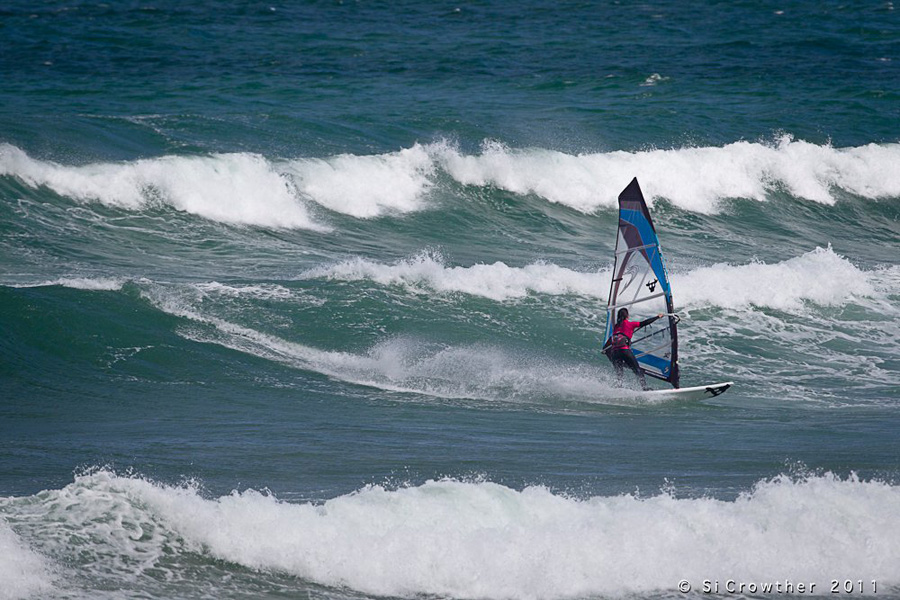
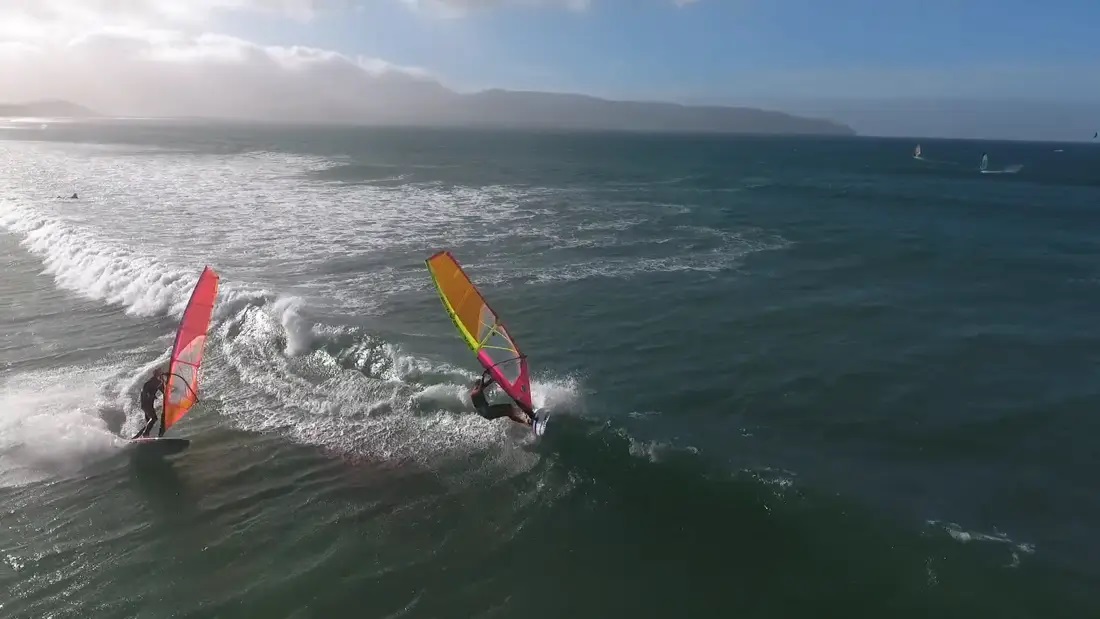
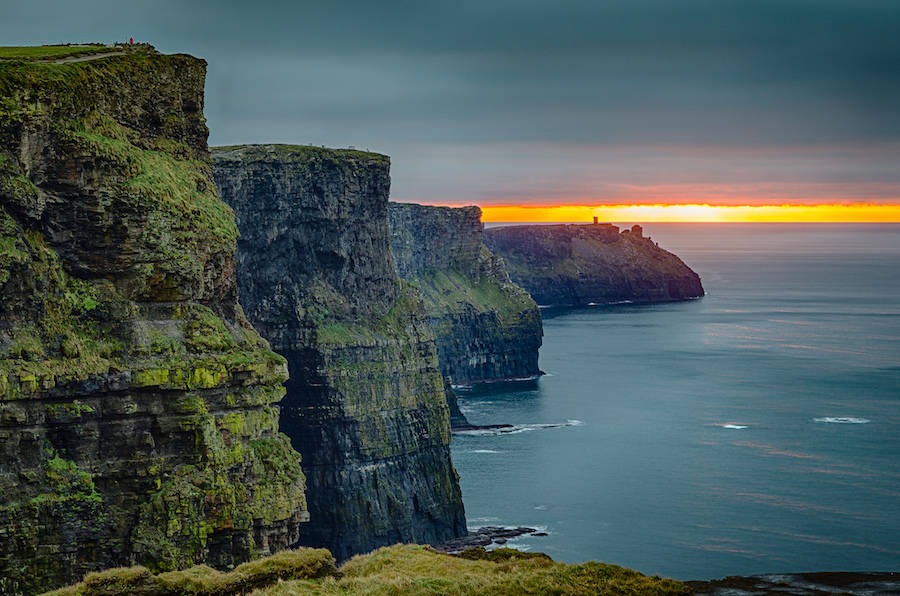
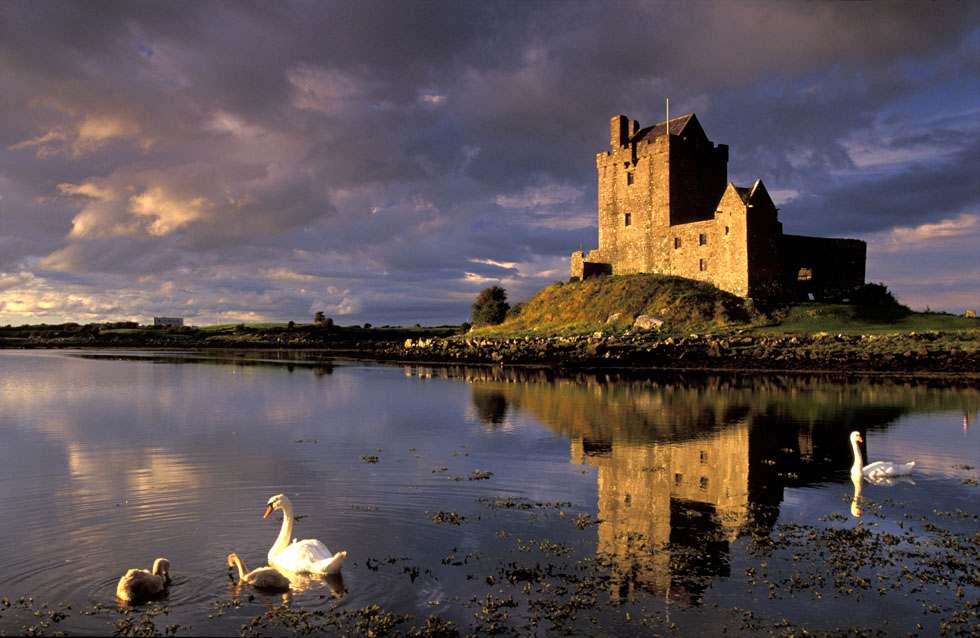
The three areas for windsurfing
On the West Irish coast, there are basically three areas that group windsurfing spots.
The first includes the coast of the Counties of Donegal, of Leitrim, and Sligo, in the northwest part of the country. It is called the Wild West of Ireland. To the west, there is a lot of open ocean. From Bundoran to Easky, there are many more world-class reef breaks than anywhere else in the country put together.
The second portion is the so-called "West Coast", which is the central part of the west coast of Ireland. Statistically, it is not the most windy, but the sunniest, and the waves of Lahinch, and Spanish Point will make - especially for the more experienced - the exploration of the West Coast an unforgettable experience. In addition, there is a wide diversity of spots, with flat water and waves - also suitable for the less experienced - located very close to each other, such as Belmullet and Achill Island. In this area, then, you also have places where you can enjoy spectacular landscapes, and are ideal for trekking (but not only here, actually), such as the famous Cliffs of Moher, or Achill Island.
Finally, the Dingle peninsula in County Kerry is the third area that offers wonderful windsurfing spots on the west coast of the country. The coast is rocky, but it is dotted with wide sandy beaches. Brandon Bay is another Mecca of Irish windsurfing, with conditions that will satisfy the most experienced, and also those who want to learn or progress. Again, there are excellent wave spots, but also beautiful spots with flat water, protected by the swell.
Travel tips
Ireland can be reached by airplane, in less than 2 hours, from most European locations. The airports of Cork, Shannon, Kerry, Knock, and Derry (the latter, in Northern Ireland) are close to the coast, and are served by national companies airlines and low cost airlines (in addition to Aerlingus, the national Irish airline, Ryanair, Lufthansa, British airways, Swiss air, etc.). Prices are quite affordable, and car rental prices have also dropped, recently. If you want to arrive with your car, you will find ferry connections (https://www.directferries.co.uk/, https://www.ferrysavers.co.uk/, https://www.irishferries.com, https://www.stenaline.ie, https://www.brittany-ferries.co.uk/) which leave, for example, from Roscoff, Le Havre or Cherbourg, in Normandy, to Cork or Wexford, in Ireland.
Or you can travel to England first, and then embark from Wales to Ireland (in this case, the sea trips are shorter). There are also ferries that connect Ireland and Scotland (if you have time, why not go and explore the Tiree Island spots, while you're there?). As for overnight stays, out of season (spring and autumn), housing prices are lower. You have a wide offer, ranging from B&Bs, to apartments, and campsites.
Finally, do not miss the evenings in the pubs, which are not simple bars, but are real institutions, the center of social life, where everything happens. An evening in an Irish pub with a traditional live music concert, and a pint of Guinness, are a must.
You can find useful information to plan your tour and excursions on the Irish Tourist Office website: https://www.ireland.com/.
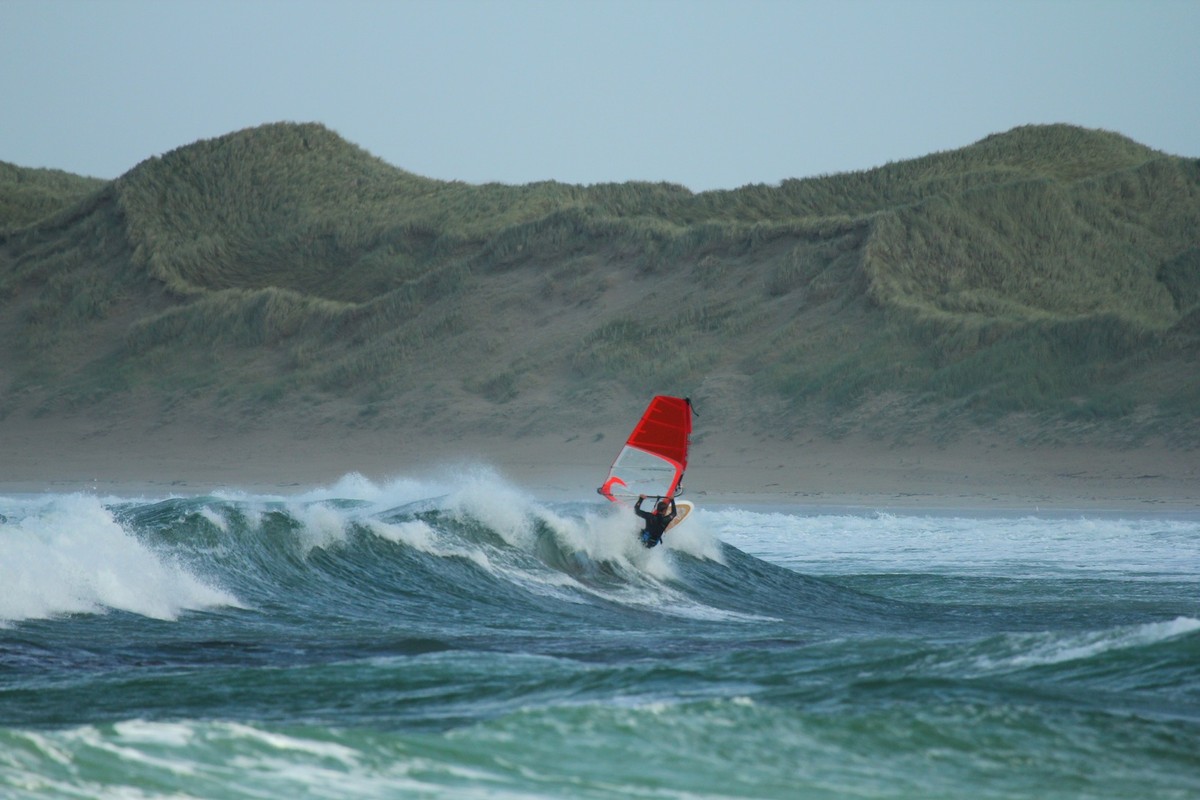
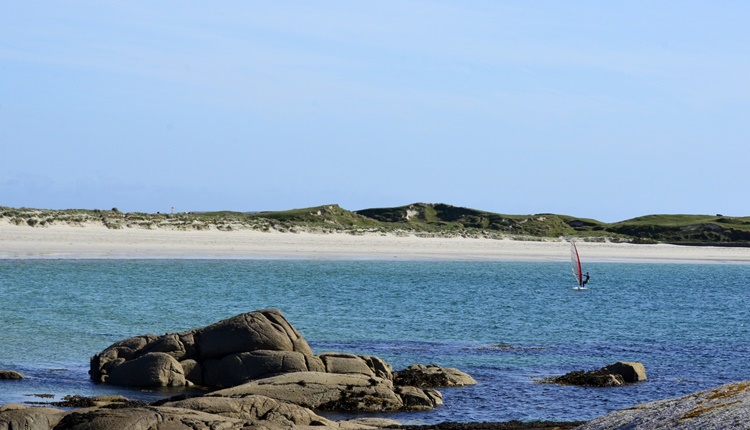
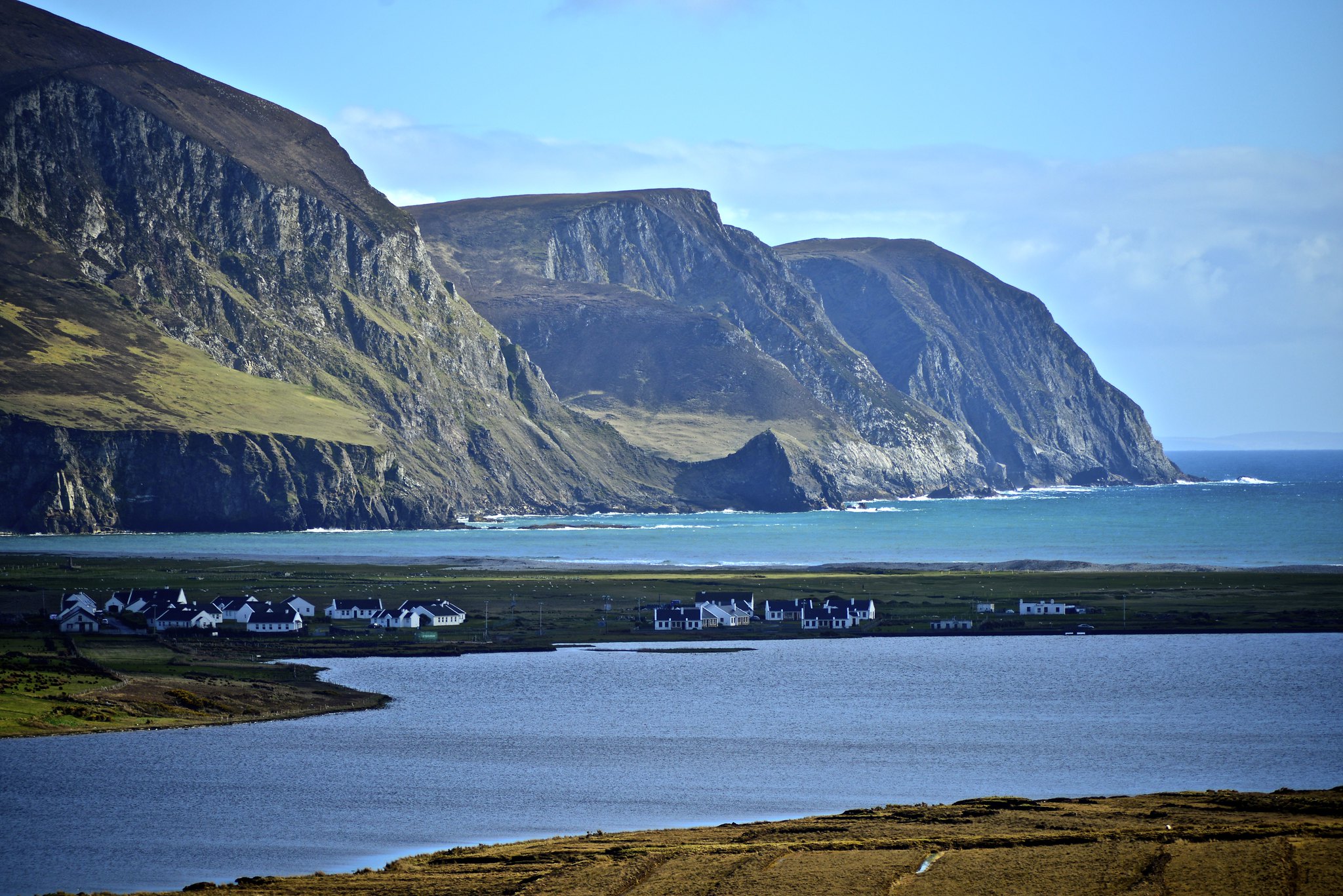
The spots
Below are some of the many (almost infinite) spots on the west coast of Ireland. Some are wave spots, others are flat water spots. The choice of spots, in this article, responds to the need to identify non-extreme and reasonably accessible wave spots (but in any case consider that many spots can become demanding in certain conditions), and spots with flat water close to them, or along a possible itinerary (ideally, from south to north, or vice versa), so you can perform wave sessions and flat water sessions, even on the same day, with short drive, and an overnight accomodation, in a nearby place.
The idea is to identify a series of spots, near some places where to stay, and where to stop during a trip, of at least a couple of weeks. The trip we have in mind includes not only windsurfing sessions, but also some trekking along the wonderful coasts of Ireland. Obviously, the exploration of this wonderful stretch of coast can also be divided into several shorter time travels (e.g. a week, or 10 days), focusing, on each occasion, only on one of the three areas indicated above.
The spots were identified by consulting the Kite and Windsurfing Guide, and the following websites:
https://www.windsurfing.ie/information/windsurfing-locations)
http://homepage.tinet.ie/~jwa/spots_text.html
https://www.maps.ie/windsurfing-map-ireland.htm
https://www.getwindsurfing.com/ireland
Since many spots are affected by the tides, you can check the times and height of the tidal peaks on the following site:
https://www.tide-forecast.com/
Another very useful website for tides, swell direction and height, and for wind forecasts is https://www.surf-forecast.com/.
This article is a work in progress. We invite all readers who have experience of windsurfing in Ireland to give us their advice, writing them in the comments at the end of the article, either in relation to the already listed spots, or regarding others spots to propose, or in relation to travel tips (locations where stay, B&B to suggest, Pubs worth of visiting....). We are also interested in suggestions related to touristic places to visit, and trekking itineraries to follow.
Counties of Donegal, Leitrim, Sligo
Magheroarty Beach (in gaelic Machaire Uí Robhartaigh)
It is the most popular North West wave spot in Ireland. The spot is located in a very large, crescent-shaped bay. with many breaks along the beach. The beach can take almost any wave and wind direction. The best waves rise at a reef near a pier (south side of the bay - watch out for the rocky bottom). Another break rises about halfway along the beach (you have to walk on the sandy dunes to get to the shore).
The glimpse from the road to the bay shows what windsurfing is in Ireland: beauty and unspoiled peace, perfect for the relaxed windsurfer.
Excellent for jumping with the wind from the West, and for waveriding down the line with swell from the North West (and wind form SW). Medium size waves, but big days with waves over 3.5 meters are possible (see video below). Presence of currents. It is the spot where Getwindsurfing.com instructors hold one of their clinics (see link above).
If you don't want to go out in the waves, besides going to the nearby Downings spot, you can also do windsurfing in the salt water lake behind the dunes. Very shallow water (you can stand almost everywhere).
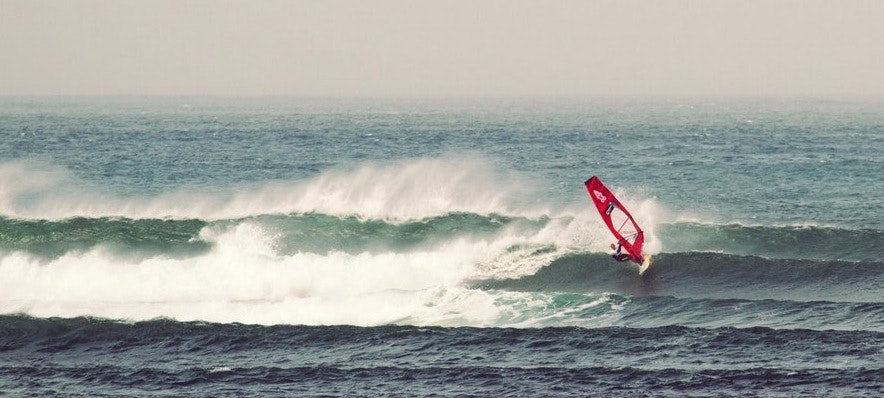
Downings beach
Flat water spot (little potential as a wave spot). The best wind directions are from south to west. Access by car to the beach.
Central part omitted. The reading of the main part of this article is reserved to Waterwind Supporters. To become a Supporter, click here.
Ventry
It is an ideal spot for freeriders and freestylers, as well as for beginners. It is located on a wide beach of clear sand, and works with wind from W, SW, S, SE, E and E / N-E.
Inch Beach
When the swell comes from S or SW, and Brandon Bay is flat, the waves enter this beautiful sandy beach. It is a beach break. It works with wind from NNW or SSE, and it is better with medium tide. Big wave spot (waves often over 2 meters). In summer, it turns into a freeriding spot, thanks to a thermal wind from the north, which blows on sunny days. There is a good cafe and restaurant right on the beach.
Rossbeigh
It is a bit off the beaten itineraries. However, it is a valid spot, located on a sandy beach, in a very beautiful setting. Works with wind from NNE and SSW.
Now, stop dreaming, and start planning your trip!
Hang Loose.
Fabio Muriano
Without your Support, Waterwind wouldn't exist. Become our supporter!
If you want to advertise with us, read here, or contact us.
Collaborate with us. Read here!
Buy our Gadgets! Visit our YouTube channel!
A video that gives an idea of what Brandon Bay can offer
A video shot in Magheroarty, Donegal
A video showing the courses run by Getwindsurfing in Magheroarty Donegal




